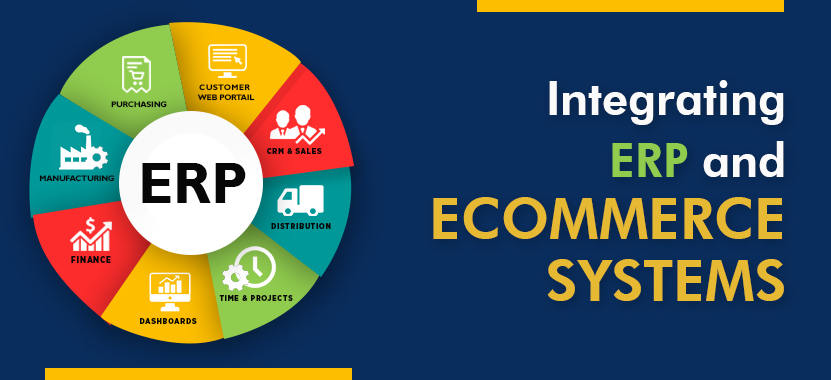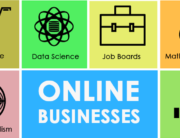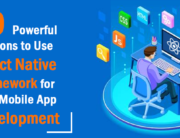As eCommerce businesses grow in scale, they simply do not have enough time to manually re-enter data into and out of their ERP system. They do not want to hire more employees due to escalation of costs. Also, their customers need precise and timely product and order information. This is the right time when eCommerce businesses should go for an ERP solution and eCommerce system integration. Though the integration involves a lot of complexity and is an expensive affair, the benefits outweigh costs. The integration enables businesses to better manage, organize and integrate their data and processes. Also, they are able to provide an enhanced experience to their customers.
There are some major challenges associated with the integration of ERP systems and eCommerce sales channels. But by implementing best practices, these challenges can be effectively overcome and a successful integration can be achieved which provides more value to businesses.
Before covering these challenges and best practices in detail, let us first tell you briefly about ERP Systems and eCommerce stores. So you can better understand them in case you are new to the online product selling world.
What is an ERP System?

An ERP or enterprise resource planning system is a set of software modules which business organizations use for managing their routine business activities like procurement, accounting, supply chain operations, project management, risk management and compliance, etc.
ERP solutions help organizations manage their business data or back office operations. The solutions have a secure and centralized data repository. So everyone in the organization right from the executives, managers and employees of different departments, clients and other stakeholders are able to access the same, updated and error-free data.
These are some good examples of ERP Systems.
- Microsoft Dynamics GP
- NetSuite
- SAP
- Sage
- Intuit QuickBooks
- Epicor
- Blueprint OneWorld
- Bitrix24
- Dynamics by Microsoft
- Odoo
- ERPAG
- WinTeam
- ERPNext by Frappé Technologies
- Priority Software
- Oracle ERP Cloud
- Expandable
- BlueCherry
- Focus 9
- ERP-ONE
- Traverse
- FACT ERP.NG
- semilimes
- Infor M3
- Passport Business Solutions
What is an eCommerce Store?

An ecommerce store is a store which sells its products online through its website. Customers buying products from such a store make electronic payments. Apart from their website, some ecommerce stores also sell their products through marketplaces like eBay or Amazon. These web-based stores are built on Magento, Shopify, BigCommerce, WooCommerce, Wix, Big Cartel or other eCommerce platforms.
Now, it is time to tell you about the major challenges related to ERP-eCommerce integration:
- Have a clear intention behind Integration
- Unclear requirements
- Choosing specific business processes for integration
- Customizations
- Lack of sufficient testing
- Adapting to the new integration solution
- Maintaining coordination between different teams
- Imparting training and support
- Consider future needs too while planning integration
The intention for the integration should be crystal clear. A business needs to understand what are its expectations from the integration. Its expectations should be able to be measured in quantitative terms than in quality terms. The business should be able to define its expectations in terms of increased sales figures, the extent of improvement in customer experience and percentage increase in its growth. It should have a bigger picture of the eventual goal of the integration.
Businesses often spend much less time with their integration partners. So the partners may not have a quite clear understanding of the businesses’ integration requirements. This can eventually result in the shooting up of costs, increased efforts and delays in the integration project. To avoid such unfavorable outcomes, the partners must have a clear understanding of the integration requirements. Also, they should have clarity over the challenges that are to be solved and the objective of ERP – eCommerce integration. The systems and data to be synchronized should be identified and marked in a clear way.
Creating workflow diagrams for mapping the entire business flow and pictorially representing the business process, can help all the stakeholders gain a clear understanding of the process and the integration requirements. So they can clearly know the motive of the integration.
As both ERP systems and ecommerce stores are complex, businesses face difficulty in deciding which particular business processes need to be integrated. In case, businesses opt for integrating too much functionality, this consequently increases their costs and management of their integration project becomes difficult. If they decide to integrate too less functionality, then their processes will not work in the expected manner.
There are two ways to implement ERP solutions. Firstly, they can be implemented out of the box with basic functionality. Alternatively, ERP solutions can be heavily tailored to make them work in a particular way for supporting the distinct business processes of a company. The downside of having too many customizations is that it can affect a business’s integration and cause the shooting up of budget and delays in its integration project. Ecommerce businesses can avoid this by understanding in advance how customizations will impact their integration project.
Though testing is one of the most imperative steps for a successful integration, still, it is often neglected. Ecommerce ERP integration projects often get delayed. Whenever this happens, testing of the software suffers the most. The purpose of testing is not just limited to verifying if the software is working perfectly, but also to judge if the integrated ERP – eCommerce system is fulfilling business needs or not. The testing is also used to see the purpose behind the whole integration process. In view of this, appropriately planning and executing the testing phase is important for successful integration.
Once a new ERP – eCommerce integration solution has been implemented for a business by its integration partner, the challenge before the business is to adapt to the solution and the new way of doing business. Its executives and employees have been used to work in the old way and it is not easy for them to leave it all of a sudden and adopt the new way. So it will take some time and effort and changing their mindset for accepting the new solution and working with it.
For providing and implementing an ERP e commerce integration for a business, two different teams have to work as one. The first team comprises of ERP consulting agency’s personnel, while the second team consists of experts implementing the solution. Coordinating these two distinct teams to work as one for delivering the business the integration solution that is built as per the highest standards in a limited time frame, remains a big challenge.
The management of a business should start using the ecommerce – ERP integration tool only after it has provided adequate training to its employees and other users who will use the solution. Unfortunately, the training is often pushed to a very small phase at the completion of the integration project. So end users find it difficult to work with the tool. Even though the whole business process is correctly integrated, not giving training to the users for running the tool eventually results in the failure of the project, which otherwise would have been quite successful.
Providing proper training and support to the end users is a must for an eCommerce business to achieve successful and prolonged integration.
Most eCommerce businesses tend to focus just on achieving short-term goals while planning for an ERP – eCommerce integration solution. There is nothing wrong in it. But the shortsightedness of not considering their future needs spanning a longer amount of time can prove dangerous for their business.
Having a long term view of the future is significantly important for having a successful integration. So while doing planning for the integration solution, businesses should think deeply about scenarios like how the integration will proceed once their short-term milestones are achieved or when their growth increases. Businesses that integrate and work without evaluating such future aspects may find themselves caught in a difficult situation. They can avoid this by contemplating their future needs in advance.
ERP – eCommerce Integration Solutions at Matrid

Matrid has enormous experience of integrating Magento with different ERP Solutions which include ChannelAdvisor – Magento Integration, PlentyMarkets – Magento Integration
Matrid has provided products and also custom integration solutions.
Let’s now reveal to you the best practices for achieving a successful ERP-Ecommerce integration.
- Build proper strategy and business case for the integration
- Do careful planning of the integration points
- Make realistic integration project goals
- Detailed definition of requirements
- What information is included in various business processes like orders?
- Which is the system where data originates and the system it moves to or gets reproduced?
- Do any key fields exist which need to be mandatorily brought into one system from the other?
- How does data pass from one system to another? Who are the people involved with the passage of data? What is the frequency of movement of data and how much time it takes?
- Which specific ERP or accounting software package and which version a business is using?
- Are there any customizations that have been made to the software?
- Is the software hosted in the cloud or on premise?
- Which eCommerce platform like Magento, Shopify, WooCommerce or any other and the version the business is using?
- Are there any third party logistics warehouses, product or inventory information management systems also involved?
- Are there any business processes that may have to be integrated in the future?
- Have the right team
- Make someone responsible
- Selecting the most suitable integration solution
- Have knowledge of your data and make it ready for integration
- Perform documentation of the data types like decimal, data, integer and text as well as of the fields in both ecommerce and ERP systems.
- Clean source data by rectifying inconsistent, inaccurate and incomplete records, purging duplicates, updating data fields into a readable format, etc.
- Add an accounting stock keeping unit in an additional field for every product available in the ecommerce store. The unit will be used for matching items at the time of integration.
-
Perform matching of selling units of measures with stock-keeping units of measure, whenever it is possible.
Properly understanding and preparing data will help you get rid of complications during the implementation stage. Your data will map properly while moving between eCommerce and EDP systems. Ultimately, you will get an integration which provides more value for your business.
- Prepare team and processes too
You should not go for the integration just for the sake of it as connecting your ERP solutions and eCommerce systems can consume a lot of your budget. That’s why it is important to know for what purpose you are doing the integration and what you aim to achieve from it. Knowing this clearly, will help you remain sharply focused on the particular integration points which will bring value to your business.
After considering the challenges given above, deciding which particular points you need to integrate between your eCommerce and ERP solutions becomes one of the biggest challenges for your integration project. So it is crucially important to understand your business’s unique workflow and the optimal flow of data between the eCommerce and ERP systems.
You should have an understanding of which are the channels your data is coming from and where it is going to. Also, you should be clear about whether your data needs to flow one way or both ways and the frequency options of its flow; on-demand, in real time, batches or intervals.
Once a business has identified the challenges that need to be addressed with its integration project, it should define them clearly. This consequently makes it quite easy for the business to set up project goals and expectations. Defining the problems and setting of goals should be approached from a level that spans the whole business, including executive buy-in and involve vital stakeholders from each department like sales, inventory, logistics, customer care, etc. which will be impacted by the integration.
While setting goals for an integration project, businesses should ensure they are realistic as this is crucial for the project’s success. Many businesses fail to understand the complexity involved in the integration, so they often underestimate the things required for a project’s completion. To stop this from happening, they should be extremely specific when setting goals and make sure they can be achieved within a predefined set of constraints. Businesses should define the goals of an integration project within these four constraints:
Scope – Deliverables including limitations
Budget – How much money a business can invest
Timing – The time required for achieving milestones including the best possible go live date
Quality – The kind of performance the end solution will give
An eCommerce business should know well what kind of integration can help to solve its challenges. Though knowing this much is good when just starting out, it is important to elaborate the integration project’s final business requirements at the time of defining them.
The first step should involve the internal stakeholders mapping out and documenting every main business process (data flow) that is being contemplated for integration. At the time of documenting such processes, certain questions need to be answered which are hereby mentioned:
After getting answers to these questions, the team of internal stakeholders can make out where existing inefficiencies lie. Also, the team can provide a detailed list of business requirements to any third parties which the business has contacted for delivering the integration solution or assisting with it.
You need to ensure that only the right people should work together on your integration project. Your team should comprise of stakeholders from the right business areas which are also capable of contributing as leaders and users. Among the team members, there should be someone who represents both the eCommerce and ERP sides and capable of bringing institutional knowledge from these sides. Ideally, your team should have members from each business unit, whose business processes will be impacted and streamlined by the integration. Sales, financials, inventory and customer service can be some of these units.
For having a successful integration project, every member of the team should be on the same page right from the start of the integration project to its completion. If they have a shared understanding of the project’s goals and action plan, scope-creeps, delays or overshooting of costs can be avoided. An active and engaged integration team that comprises of all the key stakeholders should define the project’s scope and the role of each member at the beginning.
While internal stakeholders may consist of a company’s executives and representatives of different impacted departments, third party stakeholders can include an eCommerce developer, ERP consultant and an integration solution provider. The specialist advice given by the third party stakeholders during the project’s planning stage and the intricacies of systems integration identified by them will help to spread awareness about the intricacies among the internal stakeholders
Establishing a communication schedule and protocol will help to take the integration project forward and keep the team members informed about the project-related activities. Due to open communication between members, project risk can be lessened, complications can be managed in a more effective manner and expectations can be controlled.
A big team with nobody responsible is likely to result in the failure of the integration project. To avoid this, knowledgeable and experienced members need to be appointed as project owner and project driver respectively. While the owner will be responsible for defining the scope of the project and gathering requirements for it, the driver will set the goals and direction for the project.
There are many different integration solutions available for eCommerce businesses which vary in shapes and sizes. Businesses can consider aspects like time required to deliver, price, connectivity, etc. for selecting one among them. Whichever solution they choose, it should best meet their integration project’s defined business requirements.
They should consider the following features/capabilities to decide which integration solution is the most suitable for them.
Off the shelf or tailored:
A custom coded solution may require less budget of yours for implementation, but you certainly need trained development resources for building the code and for supporting and maintaining it. In comparison to the former, off the shelf integration software is extremely easy to implement, provides more scalability and flexibility and can support ERP and eCommerce system upgrades in a quick and cost-effective manner.
Expertise of provider:
Businesses should hire only that integration provider which has special expertise in either eCommerce or ERP or both of them. By calling a previous customer of him and enquiring from him, you can judge if he is right for your integration project.
Connectivity:
The most suitable solution will have pre-built connectors to the eCommerce and ERP systems. The advantage of these connectors is that they can be implemented more easily and faster and they have been already tested by other users. ERP connectors are either on premise or cloud based and it is crucial to know which type is required by your business and who are the solution providers that deal in that kind of connector. Also, you should know if the provider supports each business process that you need for integration. In case he does not support one or more processes, you better look for some other provider.
Also, you need to consider the number of connections required. In case, your business has multiple eCommerce stores or additional connections like marketplaces like Amazon or eBay, CRM applications like Salesforce or Dynamic CRM or EDI trading partners, you should go with a solution provider which is capable of providing support integration for each connection. For more than one connection, you should choose a solution provider which powers a multi-channel integration platform.
Frequency:
Interval, real time, batch and on demand are various options available for the frequency of integration. While some integration providers provide only one of these options, others can provide more than one or all the options.
Scalability:
High quality integration solutions are capable of exchanging voluminous amounts of data and can allow business growth in an unhindered manner. You need to check if the solution can support even more amount of data exchange when a second store or marketplace is added to it.
Redundancy:
In the event of a business process failing, the integration solution should try to retransmit the data and keep on trying this till the data gets received by the destination system. There are some solutions which provide alerts to important business contacts in case data posting fails.
Testing:
Businesses tend to see testing as an overhead, however, testing is quite important in an integration project. Proper testing ensures that an integration solution meets all the business requirements. It is the final check for quality. Testing bares any gaps in an integration solution that can prove expensive for a business. It is regarded as a good practice to check what testing is included with each integration solution that is being analysed.
Support:
eCommerce is a sales channel that operates round the clock. For this reason, an integration solution must keep business processes moving all the time. It is crucial that the technical support for an integration solution is easily available and it is capable of resolving problems rapidly.
Preparing data helps to decrease the integration project’s complexity, thus saving time and reducing costs. While planning data preparation, you need to focus on these exercises.
Apart from preparing data and allocating requisite resources for it, you also need to prepare the team members and processes for the integration.
By following the above stated best practices, you can achieve successful integration of your eCommerce and ERP solutions that will bring benefits to both your business and customers.
Benefits
Let’s now discover the benefits of integrating ERP solutions with eCommerce.
- Automation provided by the ERP – eCommerce integration enables businesses to make less manual entries which in turn saves their time and increases their throughput. This also helps in reducing errors when filling the data related to items, orders, inventory, customers and shipping.
- The integration helps businesses track updates, streamline synchronization of their inventory and lets them provide precise inventory levels to their customers without hiring more employees for managing these tasks.
- Businesses can automatically inform their customers about the time of shopping of their orders. Also, the customers can track the delivery of their products.
- It becomes simple for businesses to manage prices of their products and deal with any product changes in their inventory.
- The integration imparts businesses flexibility for adding multiple offline sales channels like physical stores as well as online sales channels like marketplaces and webstores without affecting their operational efficiency.
- They are able to fulfil tax requirements with automated tax compliance and can get rid of tax exposure.
- They can better manage increased demand in online orders without allocating additional resources for it
Conclusion:
Though ERP – eCommerce integration projects are complex and require huge budgets, they can help businesses work more efficiently and grow more. Due to the benefits provided by the integration to businesses and their customers, it requires serious thinking on your part to opt for an integration solution.
By proper planning and preparation and by following the above stated best practices for the integration, you can overcome the challenges involved in implementing an ERP – eCommerce integration project and achieve a seamless and successful integration which adds value to your business.
Meanwhile, if you are seeking advice or assistance for your ERP and e commerce integration, you can rely on the knowledgeable and experienced integration experts of Matrid Technologies who over the years have guided numerous integration projects towards their successful conclusion.









Leave A Comment